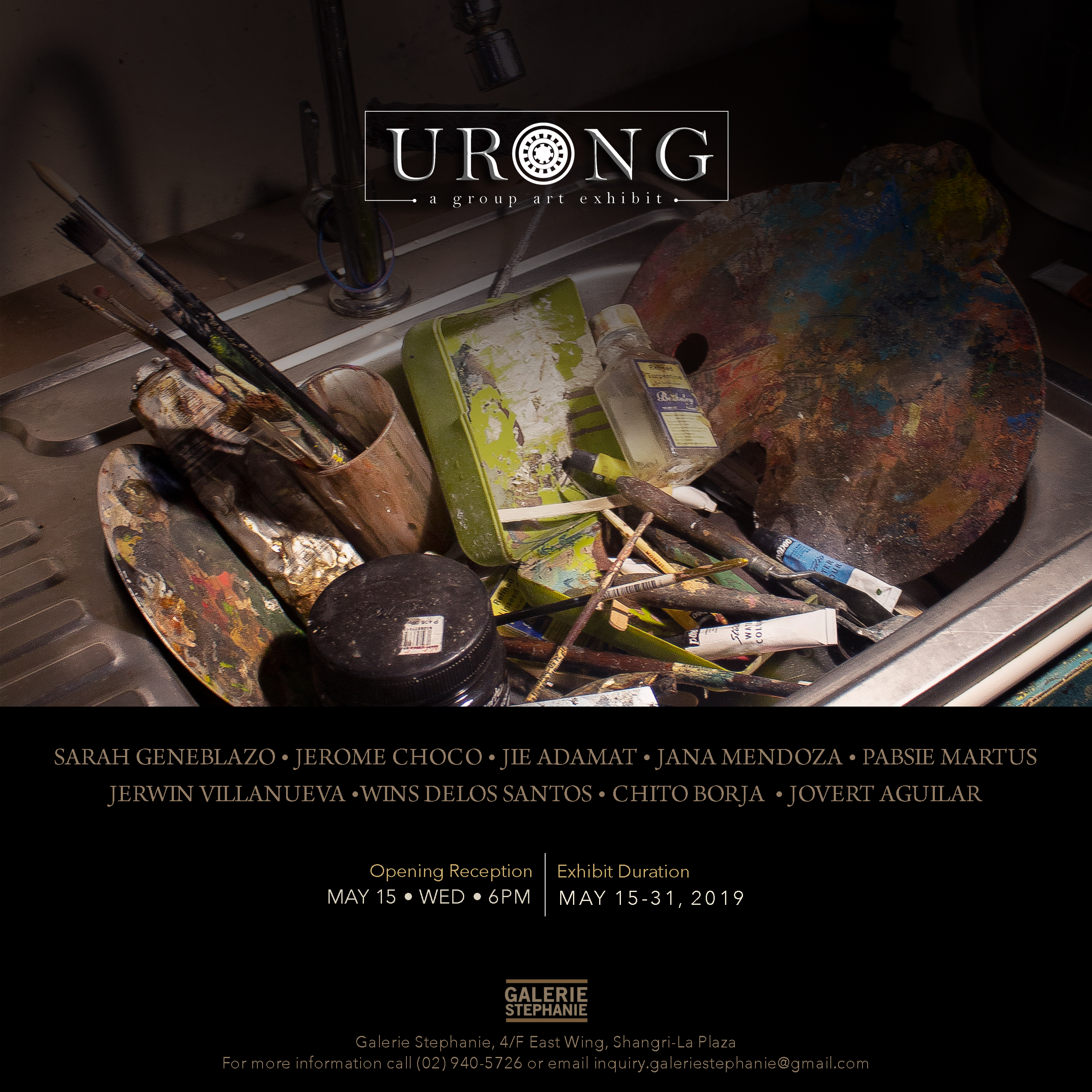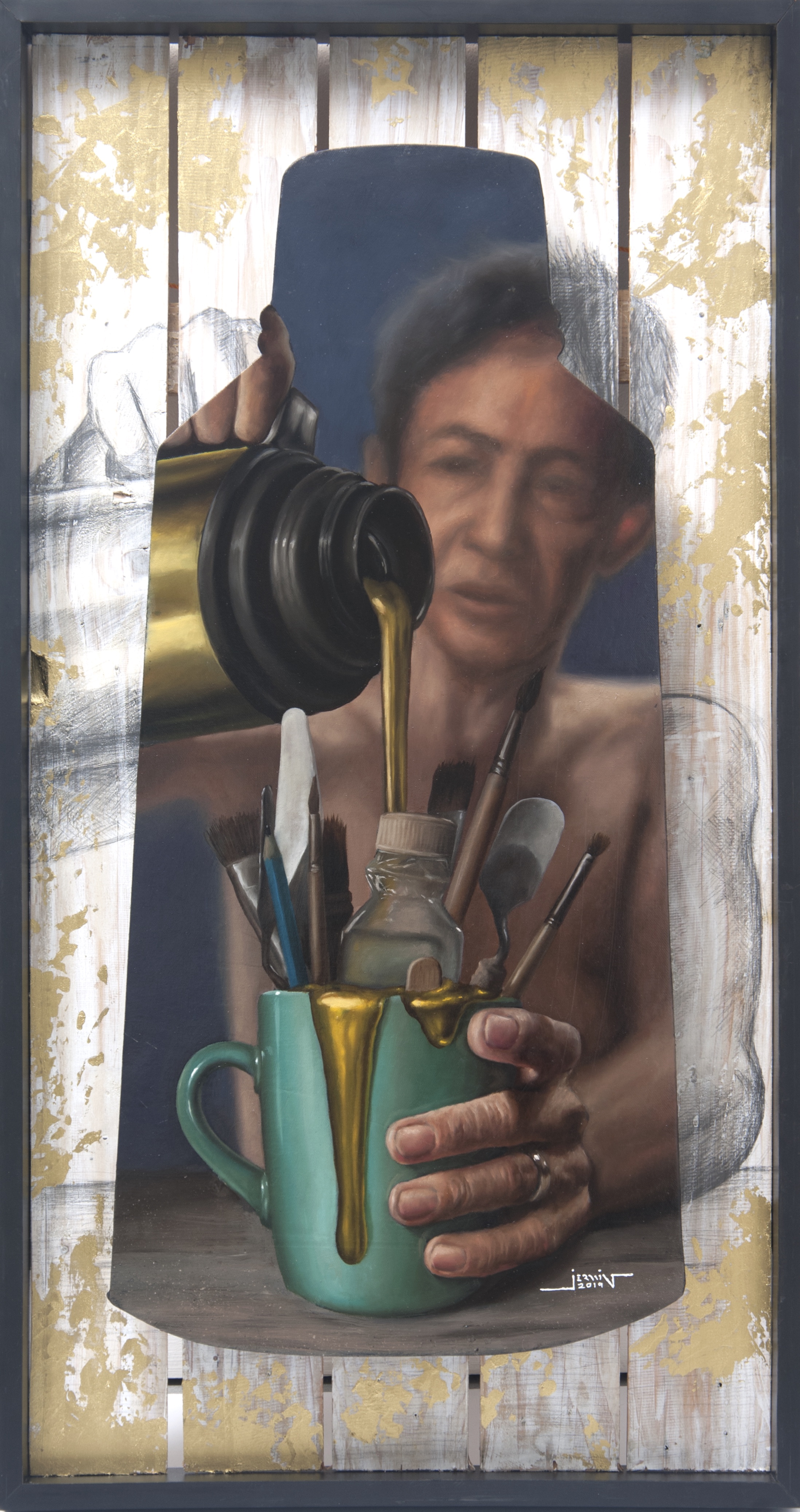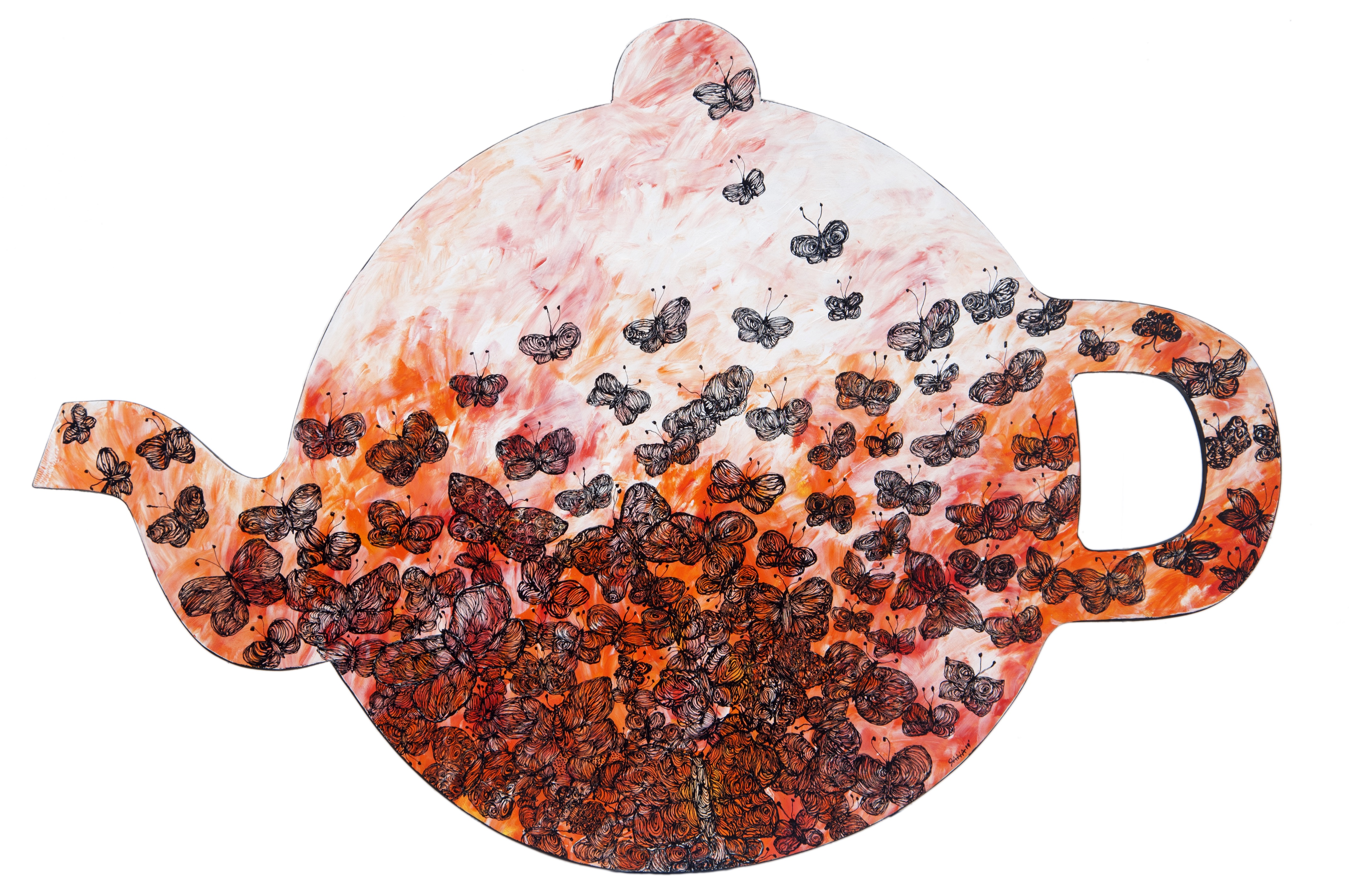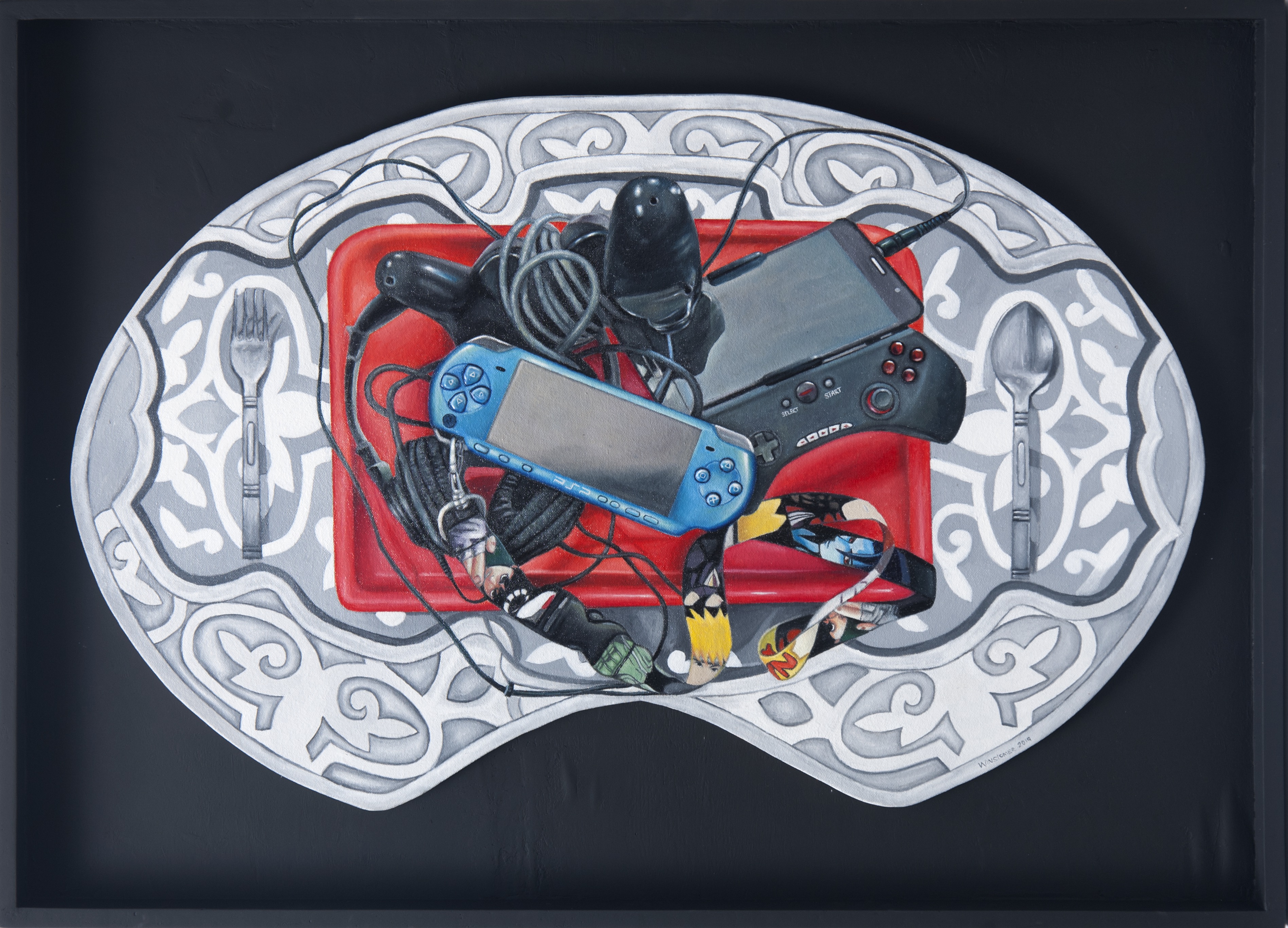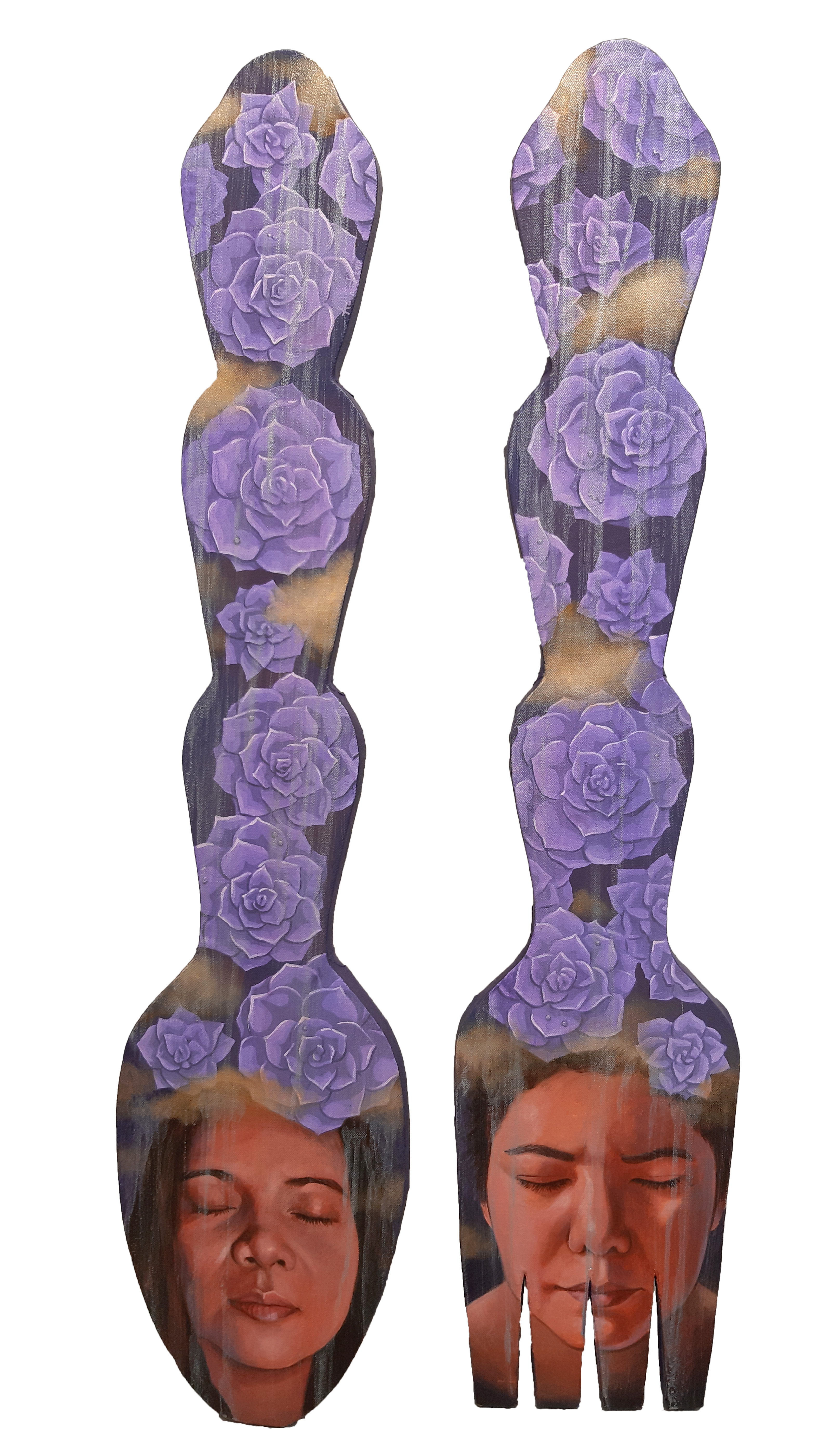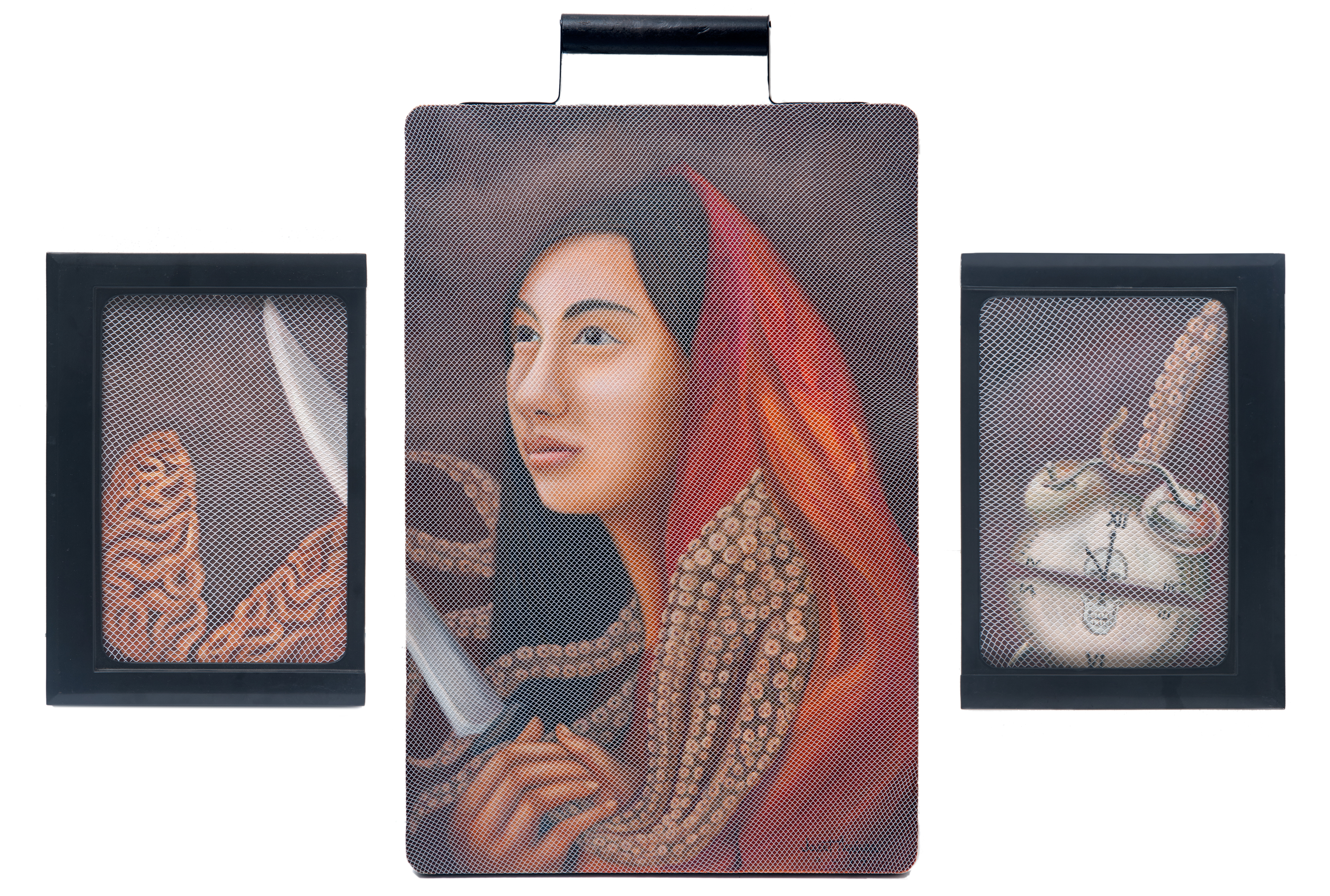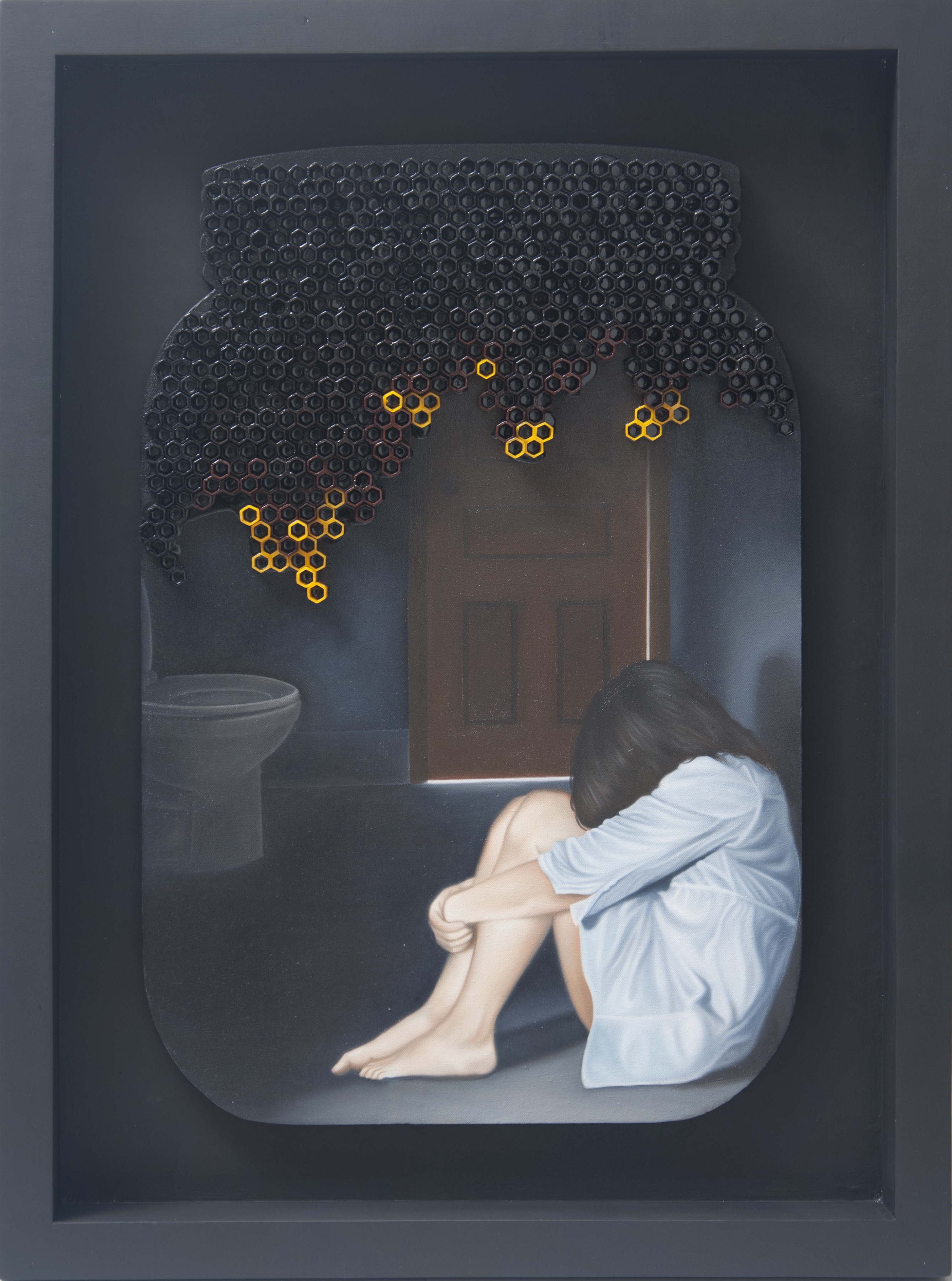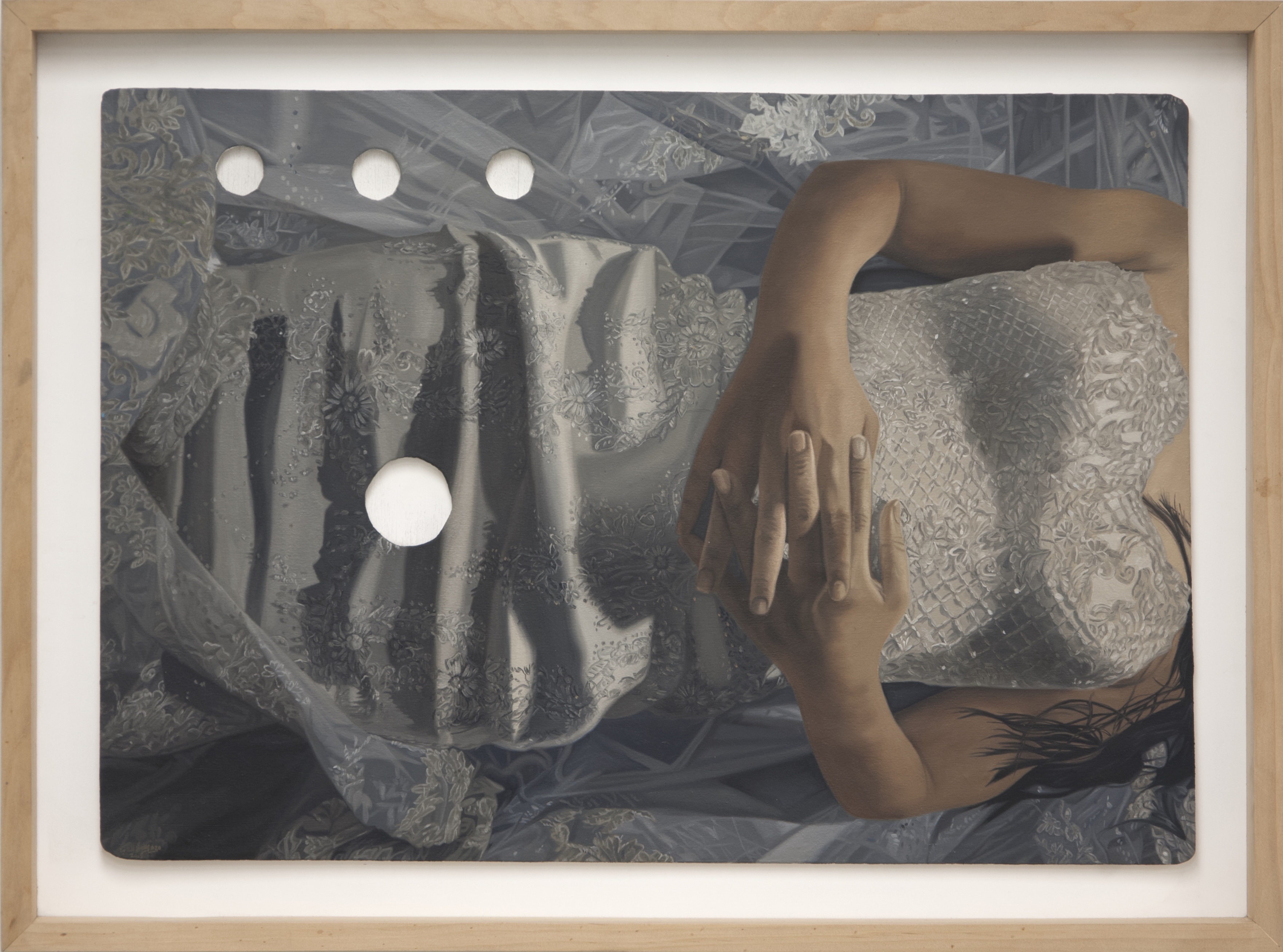The word “urong” commonly means to move back, but it can also mean to “clear the dishes.” For the artist collective behind this group exhibition, Urong also evokes reflection on their personal experiences of the kitchen.
Their third exhibition as an as-of-now unnamed group, the Angono-based artists have previously mounted shows whose themes tackled various parts of the home –first “Roof” in Ysobel Art Gallery in November of 2018, and second “Bed Space” in Nova Gallery in March of this year. While all hailing from Rizal as well as having a strong figurative technique, the artists’ concepts and aesthetic are diverse and dynamic. This led to the emergence of this central theme of ‘home,’ a topic that is universal yet simultaneously personal and subjective.
As the nine artists present the varied artworks whose form, material, symbolism, or use, hearken to a personal association with the kitchen, the work of art begins to take on a different meaning. Mundane objects such as a thermos, chopping board, a serving platter, a kitchen sink, or a decorative pair of utensils, become metaphors that stand in place of formative experiences, of a political statement, a visual and verbal play on ideas, and even a cathartic outlet for traumatic events. No longer is art for the sake of the viewer’s pleasure or aesthetic enlightenment, it becomes artifactual of the artist and their memory, expanded to make room for the viewer to connect, relate, and recreate the artwork beyond itself. In Urong or ‘Clearing the Dishes,’ art is entangled with experience, sites, everyday objects, and the socio-political milieu.
___
A Fine Arts graduate of the University of Rizal System, Jerome Choco is a young artist who apprenticed under Nemi Miranda and Wire Tuazon. In “Band Dehado,” Jerome melds his two passions of painting and playing tenor sax in a marching band. He depicts his uniform on the ‘bandehado’(platter) shaped canvas, and sets it against a landscape done in classical style. A play on both verbal and visual puns, Jerome takes ‘urong’ to also mean ‘to return,’ using a Renaissance style of palette and painting that he used to idealize. His installation piece consists of used saxophone reeds covered in hot glue made to appear like saliva.
___
Wins Delos Santos’s “Ignore” series of paintings and installation serves as a commentary on the increasingly common phenomenon of playing games while eating. It is indicative of a lack of respect for food, but also a symptom of human disconnection with the present moment; perhaps due to fast-paced urban life and the façade of connectivity touted by social media. Graduating with a Bachelor’s Degree in Fine Arts from the University of Rizal System, Angono, Wins has joined seven group exhibitions in Nova Art Gallery, Ysobel Art Gallery, Art Asia Gallery, and more. In 2014 he was a finalist in both the Shell National Student Art Competition and the Maningning Miclat Art Awards.
___
Jie Adamat’s “Succulent” is a play on the oversized ‘kubyertos’ (utensils) decorations found in many Filipino homes, as well as the superstition that a dropped spoon or fork indicates the gender of an imminent visitor. Jie depicts the faces of herself and her girlfriend on each of the utensils, adorned with purple desert rose cacti –a plant that can reproduce asexually, subverting the implicit dichotomy of gender. Jie is a BA Fine Arts graduate of the University of Santo Tomas. She has exhibited at Pinto Art Gallery, Finale Art File, and Paseo Gallery, among others.
___
A graduate of the Polytechnic University of the Philippines, Jerwin Villanueva is a painter and sculptor who supports his passion by working in the animation and graphic design industry. Jerwin interprets ‘urong’ interchangeably as the beginning and end of a cycle, as it can take place at either the start or end of a meal. He uses the image and silhouette of the thermos to symbolize his gratitude for and desire to preserve his passion for art, while passing it onto the next generation. He has exhibited at Nova Art Gallery, Ysobel Art Gallery, Giant Dwarf Art Space, and Pinto Art Museum.
___
In “Boiling Passion,” Jana Mendoza uses the silhouette of the kettle to signify change, depicting a swarm of black butterflies transforming from two-dimensional doodles to three-dimensional origami as they spill forth. Jana, as an artist as well as a person, is much like her favored icon of the butterfly, manifestation of self still in flux as she ventures into the world to fulfill her purpose. A Fine Arts graduate from the University of Rizal System, Angono, Jana has exhibited at Cevio Art Haus, Nova Art Gallery, Kuta Artist Space, and at the GSIS Museum.
___
Having been an artist for over 15 years, Jovert Aguilar is one of the group’s senior most members. He has facilitated numerous workshops on drawing, stage craft, and painting, and has joined over 60 group exhibitions. In his piece ”Cutting Time,” Jovert transforms his canvas into a chopping board while literally chopping his subject into three parts. Using surreal symbolic imagery, Jovert depicts a woman who wishes to figuratively divide her time, mind, and body in order to fulfill all the duties needed of her.
___
Pabsie Martus uses the silhouette of a jar to open a previously sealed trauma from her past. As a child, she was locked in a small bathroom as punishment, resulting in her claustrophobia. The honeycombs in both her painting and installation serve as markers for life experience –some are empty and need to be filled, some are dark, while some are sweet and full of honey. The youngest artist in the group, Pabsie nevertheless can boast of a multimedia practice in illustration, photography, painting, and production. She has taught and facilitated art workshops in Assumption Antipolo, the University of Rizal System, Angono; and has exhibited at Angkla Art Gallery, Pinto Art Gallery, and at the Manila Biennale 2018.
___
A continuation of the series from her last solo exhibition, Sarah paints a headless figure of a woman in repose, dressed in a lavish wedding gown, on a canvas with holes cut out in the pattern of a kitchen sink; the drain purposefully positioned over the genitals. In this piece, Sarah wishes to break the conservative traditions associated with domestic duty and marriage: that the woman’s place is in the home, that marriage is her only aspiration, and that her honor lies in her virginity. In her installative work, she presents three candles melted down to staggered heights corresponding to the three sink holes; and a sealed jar containing her baptism dress. Sarah is a Fine Arts graduate of the University of the Philippines who recently concluded her ninth solo exhibition “Hemline: Unholy Duty” at Galerie Stephanie. She has exhibited at the Cultural Center of the Philippines, Vargas Museum, and at Kogure Gallery in Tokyo, Japan.
___
Chito Borja presents two works in the “Patay Gutom” series –one made with broken plates in the shape of a human figure, and another with broken mugs formed into a heart. They reflect the financial hardships experienced by him and his family, and his efforts to make ends meet by washing dishes as a child. A graduate of the University of Rizal System, Angono, Chito’s body of work typically leans toward sculpture using the uncommon medium of stapler wire. He was a finalist at the 45thand 46thShell National Student Art Competition, and has exhibited at Blanc Gallery, The Metro Gallery, Nova Gallery, ManilArt, and at the Cultural Center of the Philippines.
(Text by Kara de Guzman)

